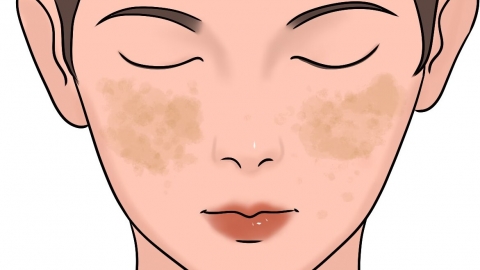What are the differences between melasma and freckles?
Generally, melasma and freckles differ significantly in terms of etiology, affected areas, lesion morphology, age of onset, and triggering factors. A detailed analysis is as follows:
1. Etiology
Melasma is primarily associated with endocrine disorders, ultraviolet (UV) radiation exposure, genetic factors, and psychological stress. It results from increased activity of melanocytes leading to skin pigmentation. Freckles, on the other hand, are mostly caused by autosomal dominant inheritance and tend to worsen with UV exposure. They result from an increased number of melanocytes and enhanced melanocyte function.

2. Affected Areas
Melasma commonly occurs on sun-exposed areas of the face such as the cheeks, forehead, nose, and perioral region. It typically presents with symmetrical distribution in a butterfly-like pattern. Freckles are most frequently found on the face, especially the nose and cheeks, but can also affect other sun-exposed areas such as the shoulders and neck. Their distribution tends to be more scattered.
3. Lesion Morphology
Melasma appears as light brown to dark brown macules with clear borders and irregular shapes, which may coalesce into larger patches. Freckles are small, pinpoint to rice grain-sized light brown to dark brown spots, round or oval in shape, with clear borders. They are typically isolated and do not coalesce.
4. Age of Onset
Melasma predominantly affects young and middle-aged women, especially those of reproductive age, although men can also be affected, albeit less commonly. Freckles usually appear during childhood, are more common in females than males, and may gradually increase in number with age.
5. Triggering Factors
Factors that can trigger or exacerbate melasma include sun exposure, mental stress, staying up late, pregnancy, and the use of hormonal medications. Freckles are mainly influenced by sun exposure, often worsening significantly after sun exposure in summer and improving in winter.
In daily life, sun protection is important for both conditions. In addition, melasma requires regulation of endocrine function and lifestyle habits, while freckles can be improved through treatments such as laser therapy.




